Microsoft’s New Hardware Challenges Apple’s
Last week we detailed how the once-quite-different Apple and Google are becoming more alike – with the search-engine giant increasingly cranking out hardware intended to compete with Apple’s Mac and iOS devices (see “Google’s Fall Event Echoes Apple’s,” 6 October 2015). And that follows Amazon’s September hardware announcements, which also overlapped with Apple’s product line (“Amazon Updates Fire Tablets and Streaming Devices,” 18 September 2015).
The same, it seems, can now be said of Microsoft.
On 6 October 2015, the Redmond-based software giant staged a hardware event that repeatedly positioned that company as an Apple rival. This has historically been the case in the software world, but it’s a more recent development when it comes to the hardware business. And Microsoft was anything but subtle about this, when announcing its latest PCs, as it stressed how they compare (more than favorably, natch) to Apple’s alternatives.
Microsoft’s new gear – a Surface Pro 4 tablet intended to compete with the MacBook Air, and an all-new Surface Book positioned against the MacBook Pro – cements Microsoft’s role as a top (albeit niche) gear maker.
That’s a trend that began in earnest with the Surface Pro 3 last year (see “Microsoft’s Surface Pro 3 Takes Aim at MacBook Air/iPad users,” 20 May 2014), even though Microsoft has been offering Surface PCs since mid-2012.
This has been a dramatic switcheroo for a company once laser-focused on Windows and Office — its software cash cows. Previously, Microsoft only dabbled in hardware such as input devices, but the company is now all in with hardware as it fights to regain some semblance of its computer-market dominance.
Its prospects for success are, however, unclear.
At its October event, Microsoft also unveiled flashy and feature-packed Lumia smartphones that are something of a Hail Mary as the company flirts with irrelevance in the Android- and iOS-dominated handset market. A refresh of its Band wrist device appears somewhat more promising with no direct Apple competition (it’s more high-end fitness band than wannabe Apple Watch killer).
Microsoft touched more briefly on its Xbox One gaming console, its HoloLens augmented-reality headgear (see “Windows Goes Universal… and Holographic,” 23 January 2015), and its recently released Windows 10 (See “Six Windows 10 Features Apple Should Steal,” 20 August 2015), which has seen more than 110 million installs since its 29 July 2015 release.
MacBook, Meet Surface Book — Microsoft used to be ridiculed for TV brand-placement efforts that included laptops sporting the Windows logo on their lids. No such laptops existed in the real world, of course, unlike MacBooks with the Apple logo on their lids.
Microsoft can be mocked no longer – well, at least not for that reason.
The company’s all-new Surface Book is the company’s first laptop computer in a traditional sense (with, yes, the Microsoft logo on the lid), unlike previous Surface models that are basically tablets with a thin clip-on keyboard cover called the Type Cover.
The Surface Book is, at the same time, a tablet of a sort with a display that detaches from the keyboard portion in a style similar to other PC “convertible” devices.
The new Surface Book differs from its convertible cousins by building in an all-new, unusual articulating hinge – the so-called “dynamic fulcrum hinge” – with four flex points that give it roughly the air of a carpet that unfurls as the Surface Book’s lid opens. The fulcrum hinge, which increases the Surface Book’s breadth as the screen deploys, is said to fix the problem with other convertibles that are top-heavy and prone to tipping.
The hinge gives the Surface Book an unusual appearance when it’s closed, with a display that doesn’t flatten against the keyboard, but rests at a slight angle, with a bit of space between the two. Some have likened this arrangement to a clothespin, and laptop traditionalists might find it disconcerting.
The display detaches from the hinge with the press of an electronic button. It can be flipped around and dropped back into that hinge in order to be used erect in an easel arrangement, or laid down with the screen facing upward for use as a subtly angled drawing pad.
Though the screen can be used solo in what Microsoft has called “clipboard” mode, it is dependent on the keyboard part for part of its battery capacity and, in high-end configurations, for graphics horsepower via a discrete GPU in the base.
Microsoft said the Surface Book is a MacBook Pro rival, albeit one that it claims is two times faster. That’s a still-unverifiable boast, but the Surface Book’s specs are indeed MacBook Pro-class, with superiority in some respects.
The Surface Book boasts a 13.5-inch screen with a resolution of 3000 by 2000 pixels, compared to a Retina MacBook Pro’s 13.3-inch, 2560-by-1600-pixel resolution display. Aspect ratios are different, with the Surface Book at a boxy 3:2 (similar to Google’s Chromebook Pixel notebook) and the MacBook Pro at 16:10.
Processors are another differentiator with sixth-generation Intel Core chips in the Surface Book, compared to fifth-gen variants in the MacBook Pro. The Surface Book base model has a “Skylake” Intel Core i5 chip, which can be bumped to an Intel Core i7 with that discrete Nvidia GPU.
In base configurations, the Surface Book and MacBook Pro are otherwise roughly comparable with 8 GB of RAM (upgradeable to 16 GB), weights of 3.34 and 3.48 pounds (1.51 and 1.58 kg), 128 GB of storage capacity, and an advertised battery life of about 12 hours. The MacBook Pro and Surface Book both max out at 1 TB of storage.
Entry-level pricing is in the same ballpark, with the Surface Book starting at $1,499 compared to the MacBook Pro’s base model at $1,299. But brace for sticker shock on the high end with a 1 TB Surface Book costing $3,199, or $500 more than a comparable MacBook Pro.
A touchscreen is, of course, the other big differentiator. The Surface Book has it, but all MacBook models lack it.
The Surface Book, like the upcoming iPad Pro, has a companion stylus. Microsoft showed a new version of its Surface Pen with an eraser mode (while poking a bit of fun at the Apple Pencil for lacking an eraser), and interchangeable tips for different kinds of pen work. The Surface Pen is bundled with the Surface Book, and attaches magnetically to the side of the screen.
The Surface Book and the revised Surface Pens are now available for pre-order and are due for release on 26 October 2015.
Surface Pro, Fourth Generation — Microsoft’s once-derided Surface tablets have lately achieved a bit of momentum, to the point where other computer makers are beginning to emulate the tablet-like PCs. Apple, some believe, is one such copycat with the iPad Pro’s Smart Keyboard cover, which is not unlike the Surface Type Cover (see “iPad Pro with Smart Keyboard and Apple Pencil Announced,” 9 September 2015). You won’t get Apple to admit this, of course.
I have been bullish on the Surface Pro line for a while (see “Microsoft Surface: A Tale of Two Computers,” 11 March 2014). I’ve recently also become enamored of the Surface 3, a smaller, less powerful computer that is otherwise similar in form and functionality, and can be bought with AT&T wireless-data service.
The Surface Pro 4 is an incremental improvement on the Surface Pro 3. The new Surface, Microsoft said, is “quieter, runs cooler, and is even more efficient.”
In terms of form factor, little has changed. It is still a biggish tablet with a kickstand in the back for stability (but, many believe, inferior “lapability”) and the same length and breadth. But it has a somewhat thinner body and a higher-resolution, slightly more spacious screen, courtesy of a thinner bezel that does away with the classic touch-style Windows home button.
As it did with the Surface Book, Microsoft compared the Surface Pro 4 to Apple hardware – the MacBook Air, in this case.
Microsoft claimed that the Surface Pro 4 is 50 percent faster than a MacBook Air. Like the Surface Book, the Surface Pro has sixth-generation Intel Core processors compared to the fifth-gen chips in the MacBook Air.
Other Surface Pro specs are roughly in MacBook Air territory, with some areas of indisputable superiority, and others of clear inferiority.
The Surface Pro’s 12.3-inch display has a much higher 2736-by-1824 pixel resolution when compared to the MacBook Air’s 1400 by 900 pixels, though the MacBook Air’s 13.3-inch screen is physically larger.
Base configurations for both machines start with 4 GB of RAM and 128 GB of storage, but the Surface Pro 4 maxes out at 1 TB of solid-state storage while a MacBook Air can’t go higher than 512 GB.
Microsoft claims 9 hours of battery life with the Surface Pro 4, a respectable showing, but one that can’t match the MacBook Air’s 17 hours of advertised battery life.
Pricing is in the same ballpark with the Surface Pro 4 base model at $899, compared to a base MacBook Air at $999 (or $898 if purchased from Amazon).
Beyond specs, the Surface Pro 4 is so different from a MacBook Air it seems almost absurd to compare them. The Air is a traditional laptop, while the Surface Pro 4 is at tablet with some laptop-style attributes.
Microsoft, however, has taken pains to improve how the Surface Pro 4 functions when used as a laptop. A new $129.99 version of its clip-on Type Cover is said to be stiffer with better-feeling keys, along with a larger trackpad that for the first time is made of glass. A $159.99 variation of the Type Cover has a fingerprint reader. All cover variations are compatible with the Surface Pro 3.
A Type Cover is not bundled with the Surface Pro 4, but the Surface Pen is. The stylus attaches magnetically to the side of the display (and, apparently, adheres quite firmly to help stave off the dreaded lost-stylus syndrome).
The Surface Pro 4, like its Surface Book sibling, is now available for preorder and due for release on 26 October 2015.
Microsoft is also selling a $200 Surface Dock, a rectangular device that sits on a desk and connects to Surface Book, Surface Pro 4, or Surface Pro 3. The dock then provides expansion in the form of two Mini DisplayPorts for external monitors, along with a gigabit Ethernet port, four USB 3.0 ports, and an audio-out port.
The Surface Dock is roughly comparable to Thunderbolt docks for the Mac (see “Mac Thunderbolt Docks: Belkin Versus the Clones,” 10 July 2014).
The Surface Dock is due in November.
Lumia Flagship Smartphones — Microsoft is in the phone biz as a byproduct of its troubled 2013 Nokia acquisition, and it faces a titanic challenge in this Apple- and Android-dominated market.
Some of its pain has been self-inflicted, with the absence of new flagship Lumia handsets for some time now. That has finally changed with the unveiling of premium Lumia 950 and Lumia 950 XL phones as rough equivalents to the iPhone 6s and iPhone 6s Plus. Also mentioned in passing was a new lower-end Lumia 550.
The new Lumia 950 and 950 XL, at 5.2 and 5.7 inches, share a few attributes, like USB-C charging and syncing, AMOLED displays with Gorilla Glass, removable batteries, 32 GB of storage expandable to 200 GB via microSD cards, a 2560-by-1440-pixel resolution display, a rear-facing 20-megapixel camera with 4K video recording, and polycarbonate bodies in black or white.
What’s more, Microsoft made much of the fact that its Lumias run the Windows 10 operating system, just as Windows PCs do. More than a trivia item, this capability enables the handsets to function essentially as PCs when connected to external monitors via a new Display Dock accessory.
At its event, Microsoft demonstrated how email and Office apps on a phone can be controlled in a desktop or “Continuum” mode with a monitor, mouse, and keyboard connected to an adapter called the Display Dock, while at the same time preserving a handset’s capabilities as a smaller, secondary screen.
Microsoft sees Continuum as a big bragging point, given that the competition doesn’t have anything like it, but it’s unclear whether this would have any effect on the company’s precarious position in the smartphone market (much less get anyone to switch over from iPhone or Android).
Indeed, some tech pundits have declared the new phones essentially dead on arrival. The fact that they will initially be available on only AT&T does not help matters.
The new smartphones are due to be released in November.
Microsoft Band, Second Lap — Microsoft’s initial foray into the health-band market got mixed reviews.
The Microsoft Band has indisputably advanced tech that includes GPS, a gyrometer, a 3-axis accelerometer, a capacitive sensor, and additional sensors to measure heart rate, ambient light, skin temperature and galvanic skin response. Microsoft also got praise for making the Band compatible with iOS and Android, as well as its own Windows Phone.
But the Band has a clumsy physical design with a flat, thin screen and an uncomfortable clamp-on design that makes it feel more like a law-enforcement monitoring device than a personal-wellness gadget.
Now Microsoft has announced a $250 Band 2 with an additional sensor — a barometer for measuring altitude — along with a revamped industrial design that includes a curved screen and, it claims, a much more comfortable feel.
The multipurpose band is designed to track heart rate, exercise, calorie burn and sleep quality, and it can fit in with a wide range of activities such as running, biking, and even golfing. It is also a quasi-smartwatch with access to email, text messages, calendars, and more, including Microsoft’s Cortana voice-activated assistant, but it is not being positioned as competition for the Apple Watch.
The Microsoft Band 2 is due to be released later this month.
HoloLens, Meet Your Makers — Microsoft’s experimental augmented-reality headset made quite an impact when it was announced earlier this year, partly because it differs from virtual-reality (VR) devices that are back in vogue.
Augmented reality overlays digital constructs upon the real world, unlike VR content that is a realm unto itself with the real world hidden from view.
The HoloLens remains experimental and out of reach for average consumers, but Microsoft said that development kits will become available early next year for a steep price of $3,000 apiece.
The company also staged a HoloLens demo with robotic monsters seeming to burst through the stage walls and attack the headset wearer as part of an experimental video game called Project X-Ray. Audience members could see this sci-fi tableau unfold on two large screens. Happily, no one was actually eaten.
Xbox One — Though some might consider the latest Apple TV to be a gaming console, it does not fit that definition in a hardcore-gaming sense like Microsoft’s Xbox One does. As a result, many Apple fans (such as my son) have embraced Microsoft’s console as their default gaming platform.
Microsoft had a fair amount of Xbox news at its event, though no blockbuster revelations. This includes a looming console upgrade to Windows 10 (an attempt to create OS consistency across Microsoft’s hardware line); backward compatibility with older Xbox 360 games (coming soon); and a decent lineup of new titles in the pipeline, including Halo, Gears of War, Forza Motorsport, and Tomb Raider sequels.
A New Microsoft Surfaces — As other tech writers have noted, the Microsoft event also was notable for its flawless pacing, with flairs of showmanship – such as hardware executive Panos Panay omitting the Surface Book’s removable-display capability during the initial product walkthrough, then gleefully trotting it out later as a one-more-thing flourish.
In another blink-and-you-missed-it moment, a Surface screen showed a drawing of a fridge with toast popping up from the top. This was, of course, a subtle dig at Apple’s Tim Cook once likening hybrid devices such as Surface computers to ridiculous refrigerator-toaster mashups… only to roll out the company’s own hybrid PC, in the form of the iPad Pro.
Much like Apple finding its footing after Steve Jobs’s death and finally seeming to have fun during its press shindigs – we’re lookin’ at you, Hair Force One – Microsoft feels like a new company with the departure of longtime CEO Steve Ballmer and the ascendency of Satya Nadella.
The Microsoft event had nothing about Apple-compatible software, but a focus on applications for iOS and Mac has been part of the CEO’s modus operandi as of late.
At the same time, Microsoft has committed to competing with Apple in the hardware arena, offering up gear that not only rivals Macs directly, but also can function as touchscreen iPad alternatives. With the Surface Pro 4 and Surface Book, it has generated genuine excitement, and even if the new Lumia phones aren’t likely to be major successes, the Display Dock is unique. We’ll know later this month whether it is able to deliver on that enthusiasm.
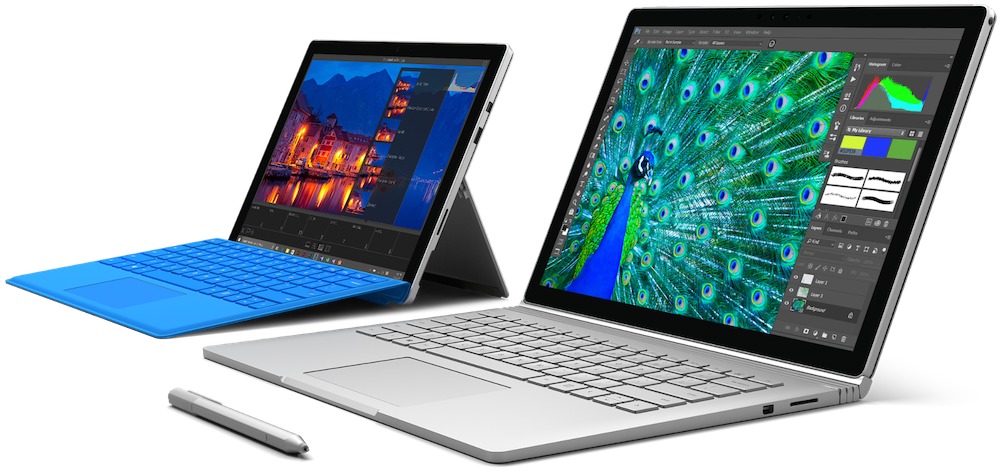
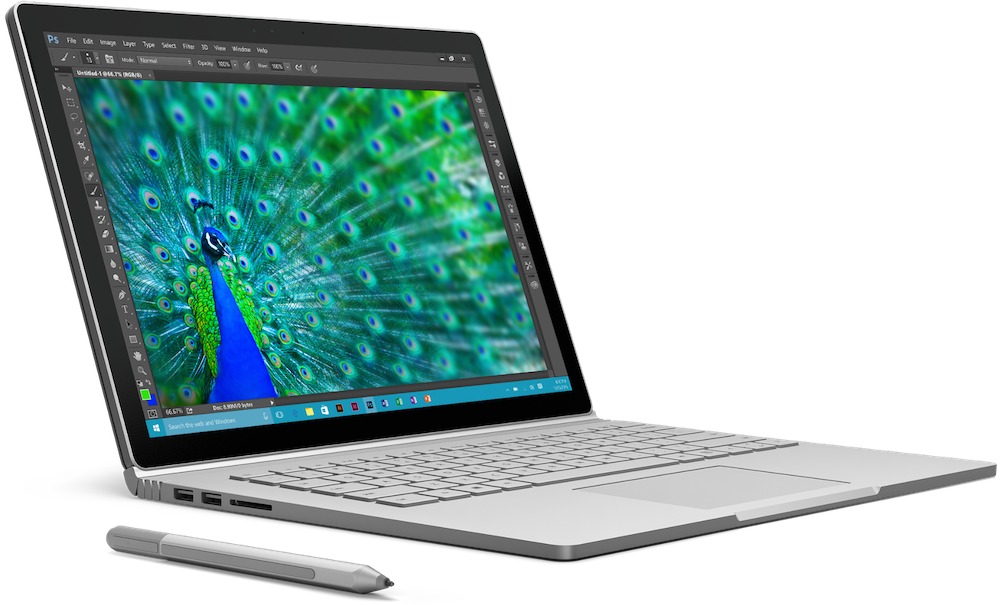
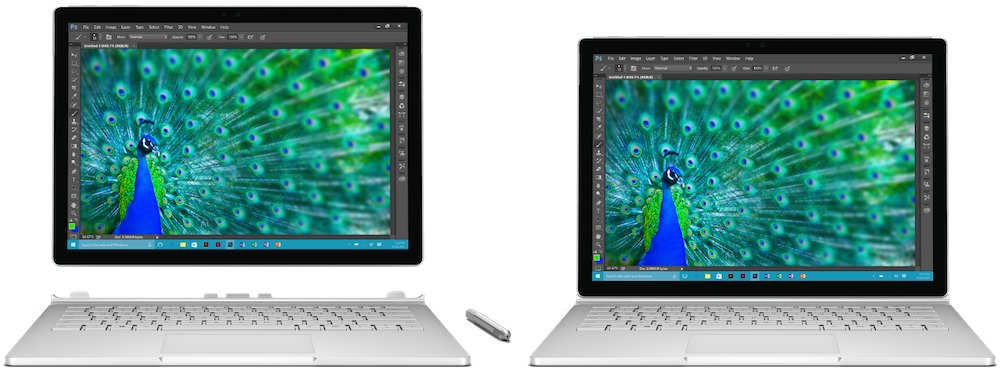


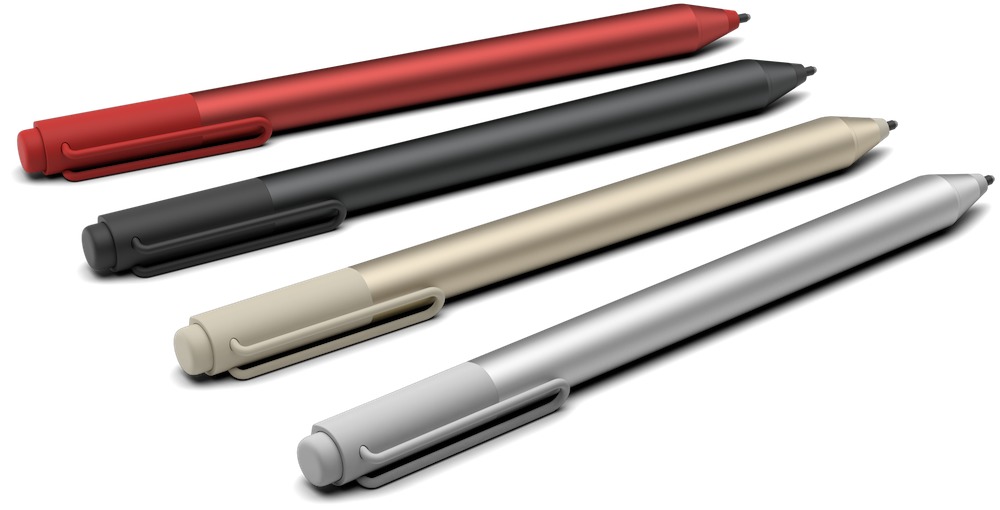
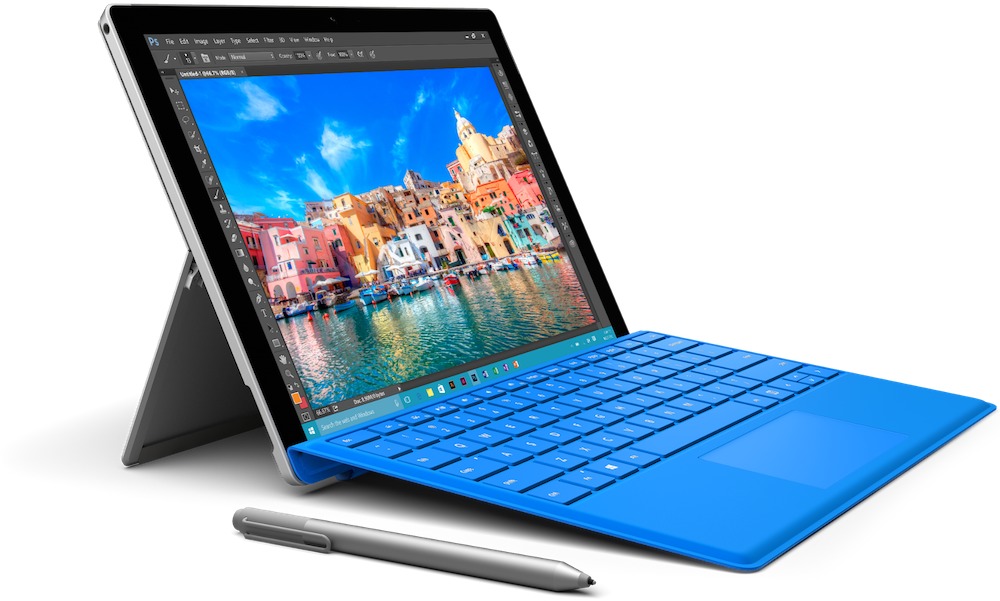
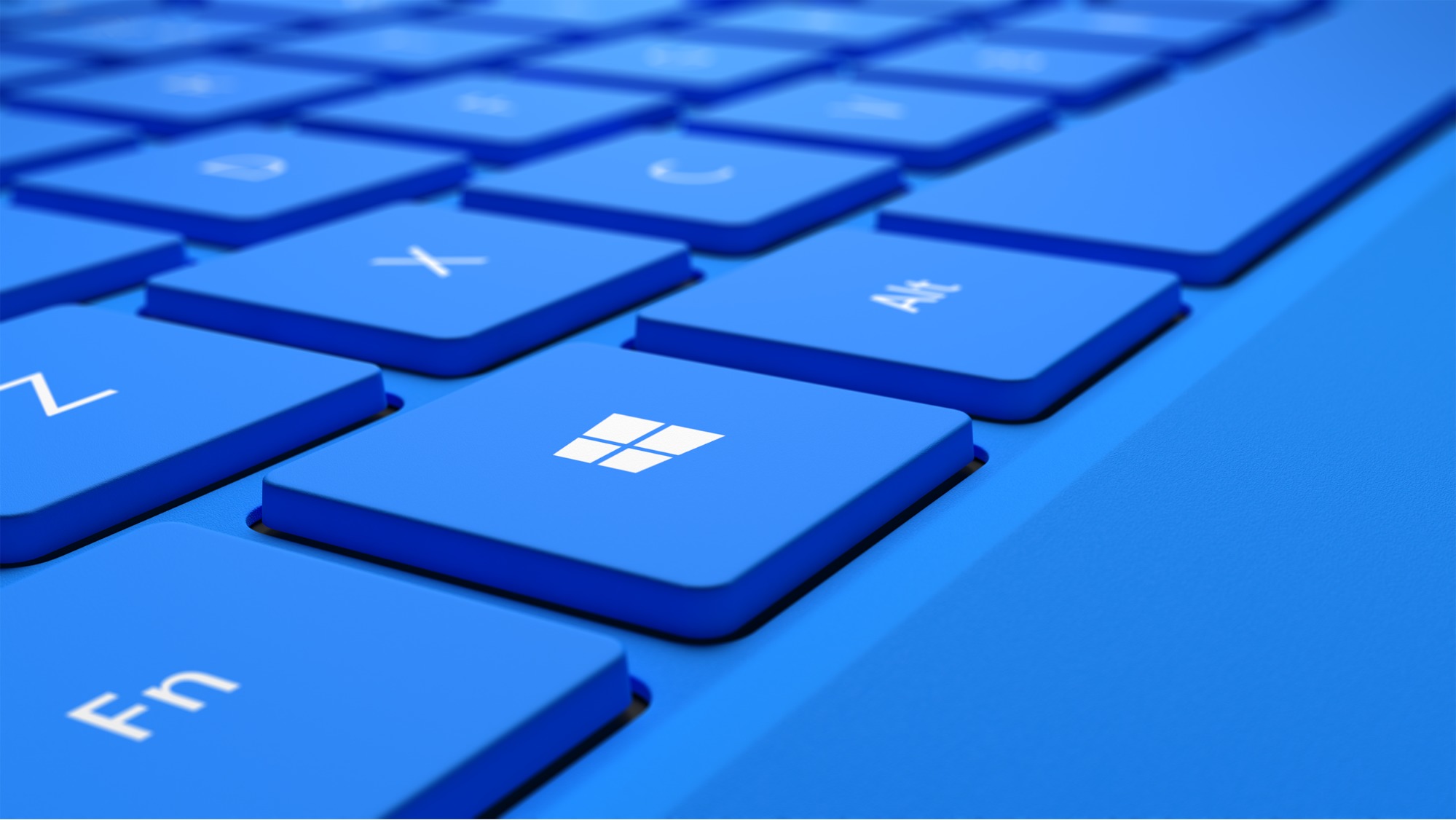


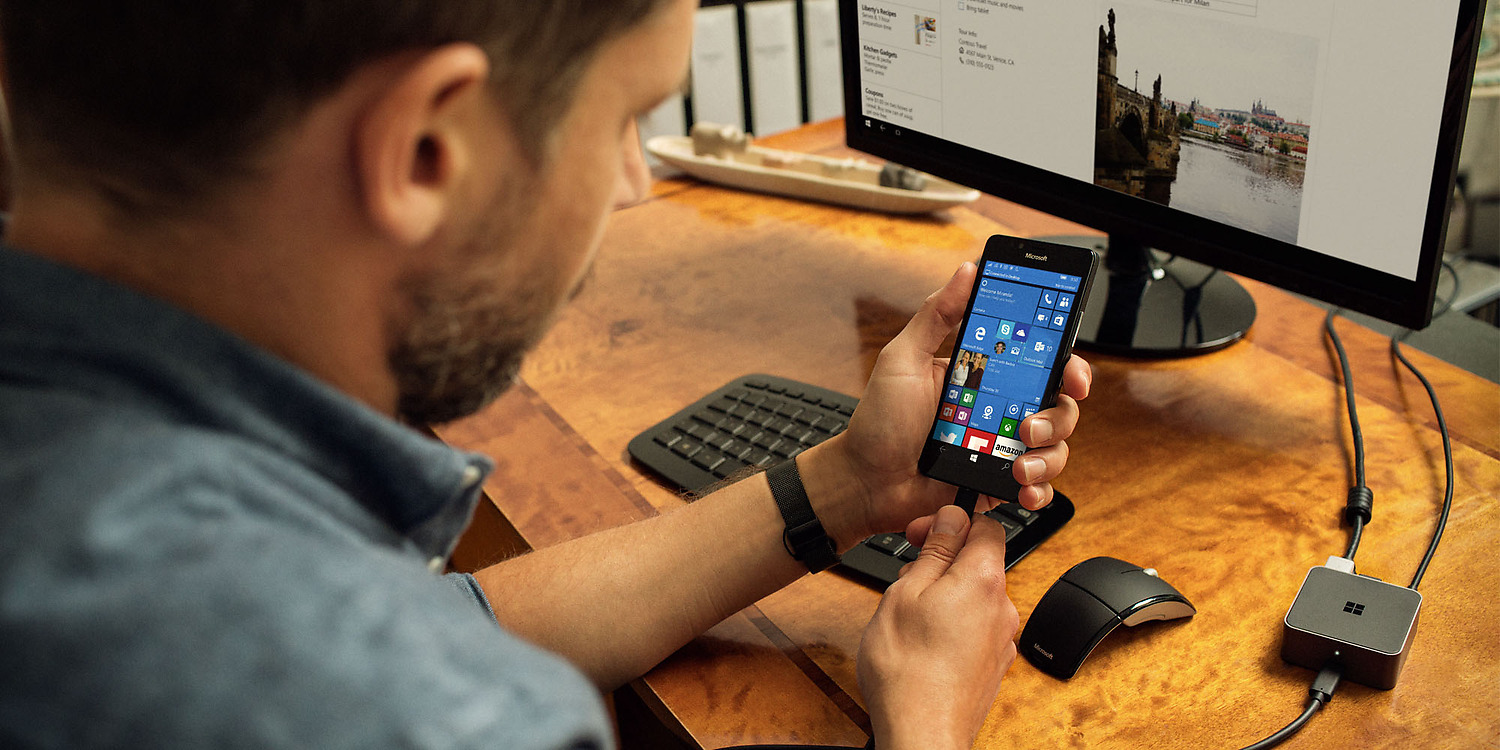
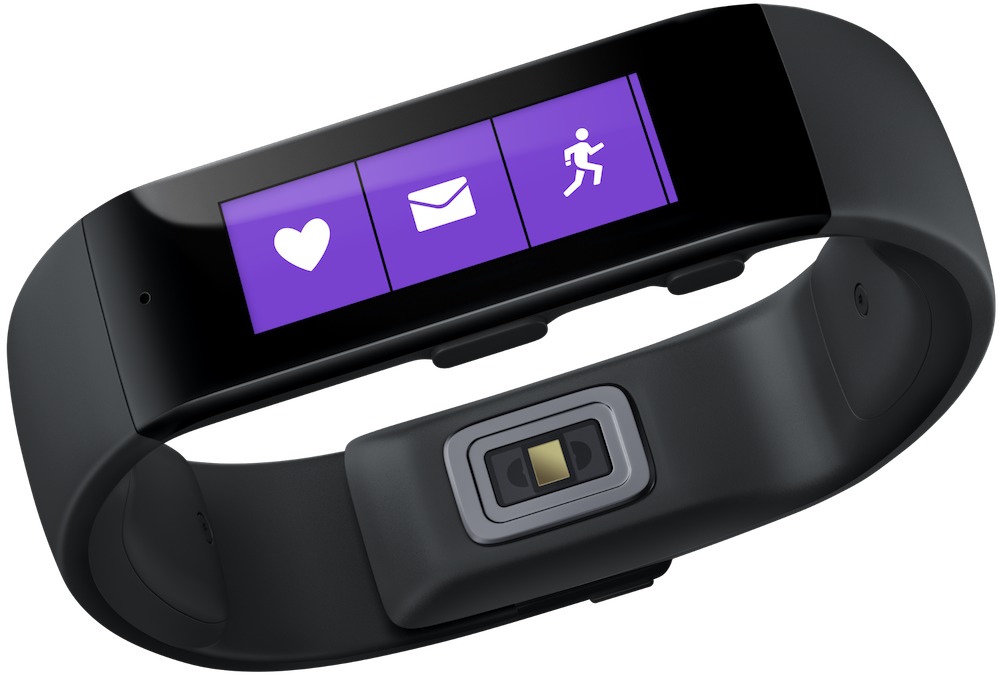
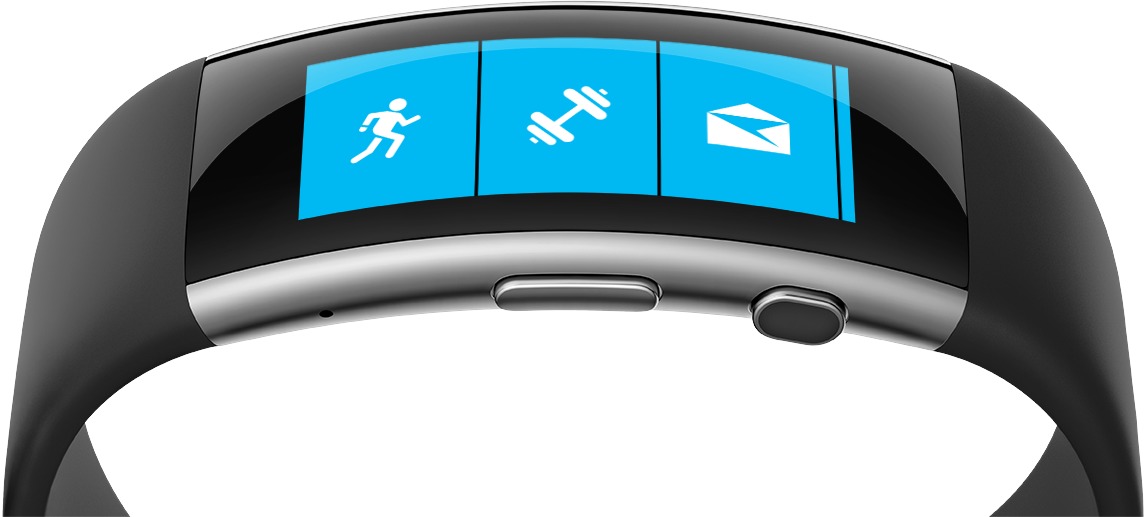
Sure, Microsoft has stepped up their game but will it matter? I don't think there is a premium market for windows devices. Time will tell.
I think it is great that MSFT has done this. As one who uses MSFT products currently I am excited for their continued support and development in their hardware especially. My SP3 works like a champ, even after the upgrade to Win10 (Win8 ran much faster tho). I can't wait to get my hands on a 950 XL, I've been using WP8 for work and it is amazingly better than Android and iOS, faster, more nimble, and focused. The fact that the high priced Surface Book is already sold out for pre-orders says a lot about a "premium market" not being out of reach for MSFT and I hope they continue to roll along these same lines... just don't let another 2 years go by before releasing more flagship devices.
Well done article. Thanks.
While these new Microsoft computer/tablets are fine in and of themselves, Microsoft "competes" with Apple in the hope that some of Apple's glamor will rub off on them. This suggests to me a lingering inferiority complex. Not unlike that evident in Apple's old Mac vs. PC ads.
They're not likely to convince many Mac users to switch to Windows; rather they hope to boost lagging PC sales by making their customers feel they are getting a product every bit as cool as a Mac. It's worth noting that PC sales continue to lag while Mac sales continue to grow. On the other hand, iPad sales have slacked off as well, providing an opening for Microsoft's tablet PCs, which fill both niches.
The real difference between Apple and Microsoft used to be in their computer operating systems. But since Yosemite and Windows 8 both adopted the same flat, low contrast design meme, that distinction means less than it once did. This provides yet another opening for Microsoft, as OS X has become a pale ghost of its former glorious self. Apple's once genius designers got lost in a dark, gothic forest and God only knows when, or even if, they will find their way out again.
On the up side for Apple, Microsoft's tablets and PCs now cost as much and more as comparable Apple products. That so-called Apple Premium no longer exists. This strongly suggests that Microsoft figured out that if they want to compete with Apple in hardware, they needed to match Apple in build quality as well as in specs. Regarding the new Intel chips the Surface Pro 3, however, it's only a matter of time before Apple updates their laptops with the same chips. The GHz wars effectively ended when Apple switched to Intel processors.
Good article, very thorough. It's good to see MS embracing the Mini Display Port. Only took them 10 years and now it looks like Apple may be migrating away from it.
regardless of how nice the hardware (vaporware at this point) might be, the design of it still lacks the elegance of the Apple hardware, and bottom line: you'd be stuck working with windoze as an OS. That's a deal-breaker for most people right there.
Yeah, that's always the kicker. Changing operating systems is a huge step, and not something hardly anyone would do lightly, regardless of how good the hardware was.
In fact, I think the most interesting products in this release might be the Lumia smartphones in conjunction with the Display Dock. If the performance is really there, that could be a big deal for the large percentage of people who just have a phone these days, and can't also afford a computer. That's a lot of what has driven the smartphone market to have ever-larger screens, since if you're going to have only one device, a smartphone with a large screen is the best compromise. But if you could add a keyboard and screen easily...
I'm going to take exception to the idea that the iPad Pro is a hybrid PC. In what way? The original iPad had a wired keyboard (via the dock connector). The iPad Pro is running iOS and if there are any additional features to make it more PC like, they are unannounced.
If the iPad Pro ran a version of OS X or could run OS X software on iOS, then it would be a hybrid. But without that, it is another iOS tablet with a larger screen and a stylus.